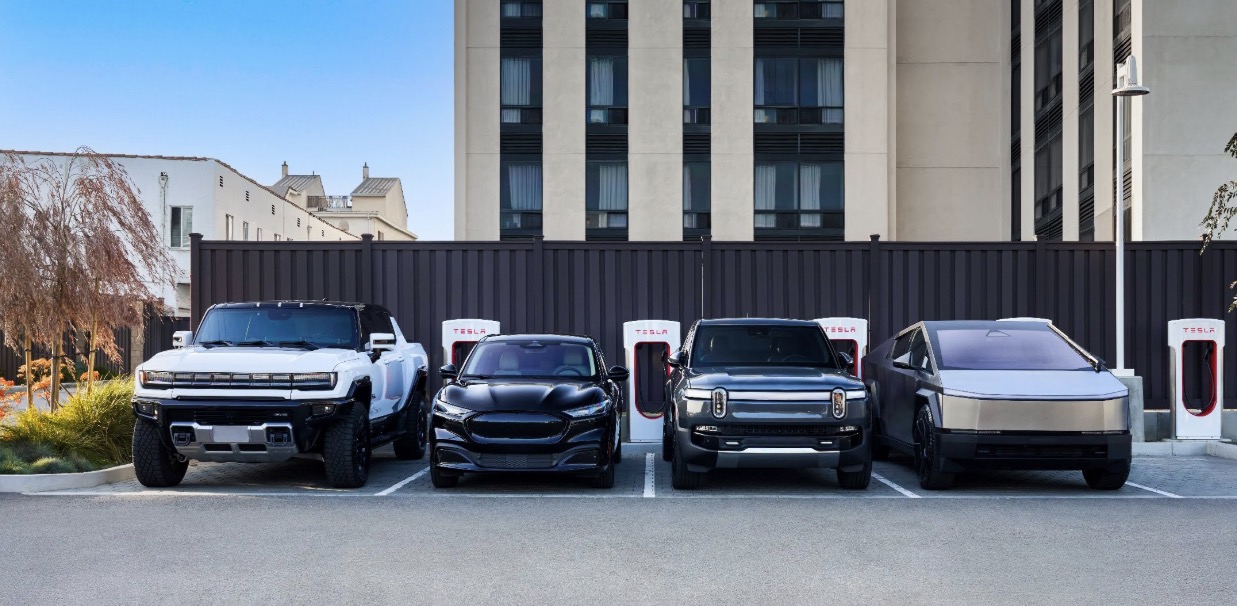
Tesla’s business in shrinking in every way except for one: Supercharging revenue, which Tesla CEO Elon Musk once said would never become a profit center for the company.
Tesla released its Q2 results today, and they’re not great, but show a slight recovery in some ways after a horrid Q1.
But the Q2 results still show that Tesla is shrinking, with the company posting year-over-year revenue declines in nearly every aspect of its business – automotive sales, leasing, regulatory credit sales, and energy generation and storage installations were all down YoY, as Musk’s presence at the head of the company continues to drive customers away.
Automotive sales and energy generation saw a recovery from the low numbers of Q1, but these businesses are seasonal, with fewer people buying cars in the winter (especially globally, as China always sees a large dip around the Chinese New Year). Comparing to Q2 2024, all went down.
That is, except for one category: “services and other,” a category of profits that includes vehicle service and Supercharging. That went from $2.61 billion in revenue in Q2 2024 to $3 billion in 2025, quite a significant increase.

Profits are about the same between the two – $167 vs $166 million, but it’s an actual increase in scale whereas every other aspect of Tesla’s business has pulled back in scale over the same time period. And compared to last quarter, where profits were $101 million, Tesla saw a 64% profit increase from the Services and Other department.
Tesla doesn’t typically break out each portion of this catchall category, but did mention where the growth in profits from this category came from:
Services and Other gross profit grew 64% sequentially, partly due to improved Supercharging gross profit generation from increased volume. We added over 2,900 net new Supercharging stalls, growing the network 18% year-over-year.
This comes alongside an increase in Supercharger usage from non-Tesla vehicles. Over the past year, Tesla has been gradually opening up the Supercharger network to other brands, and other vehicles have been able to use it either with adapters or native NACS ports.
There was a hiccup in deployment when Tesla CEO Elon Musk unwisely fired the entire Supercharger team, causing quite a bit of chaos in charger rollout. Tesla rehired some of the team after Musk came down from his tantrum, but still lost some of the best talent in the industry.
But the rollout seems to be back somewhat on track, with several more brands gaining access so far this year, and more to come.
This is driving profits for the company, as drivers of other EVs use Superchargers, which are generally considered a superior charging experience. Tesla also charges higher prices for non-Tesla EVs, allowing the company to generate more profit as more and more non-Teslas plug in at Supercharger stations.
Further, Tesla scaled down its mobile service fleet over the course of the past year and past quarter, so that likely contributed less to revenue and profit than Superchargers did.
But this conflicts with something that Musk said in the past: that the company wouldn’t use Superchargers to drive its profits. He said the same thing about service, too, but Tesla’s position on that also seems to be changing.
And $167 million isn’t exactly a profit center, given Tesla’s overall net income of $1.1 billion (GAAP), but it is the only part of Tesla’s business that grew revenue over the course of the past year. Every single other part of the business went down – and that’s even including energy generation and storage revenue, where Tesla touted installations increasing significantly on a trailing-twelve-month basis, but which still saw a YoY decline in revenue.
The 30% federal solar tax credit is ending this year. If you’ve ever considered going solar, now’s the time to act. To make sure you find a trusted, reliable solar installer near you that offers competitive pricing, check out EnergySage, a free service that makes it easy for you to go solar. It has hundreds of pre-vetted solar installers competing for your business, ensuring you get high-quality solutions and save 20-30% compared to going it alone. Plus, it’s free to use, and you won’t get sales calls until you select an installer and share your phone number with them.
Your personalized solar quotes are easy to compare online and you’ll get access to unbiased Energy Advisors to help you every step of the way. Get started here.
FTC: We use income earning auto affiliate links. More.












